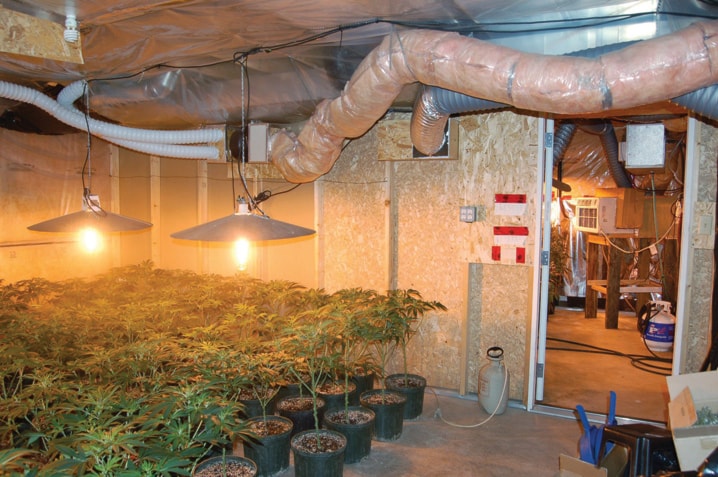The lasting impact a marijuana grow-operation has on a home forces the closure and remediation of the dwelling.
However, the amount of remediation required for the house to be considered safe to occupy isn’t universal and local realtors want a provincial standard.
“We want consumers to know when they step into a property, if they should choose to buy a property that was a past grow-op, that it is safe, that it is habitable and it will continue to be safe and habitable,” said Tracey Christensen, Central Alberta Realtors Association president.
D.J. Hynek, of D.J.’s Home Inspections in Red Deer, looks for telltale signs in homes that indicate a grow-op was once there.
“I’m looking for things that have been tapped with the electrical, stains in the concrete, weird holes in closets going up to the attic,” said Hynek. “They pull toilets and run their vents through the sewer drain on your toilet. They do a lot of chemical damage. Those are signals of a grow-op.”
In August, a trial date was set for a grow-op that was busted by RCMP in Rocky Mountain House, where 959 marijuana plants were found. In June, a Red Deer man received a 16-month sentence for attempting to set up a marijuana grow-operation in his apartment. In this incident, 107 plants were found.
Although he hasn’t come across one in Red Deer yet, Hynek did say if there was a grow-op the house would likely have to be condemned so health authorities could deal with the lasting health issues associated with a grow-op.
“They step in and seize the house,” said Hynek. “They do all sorts of remediation to allow the public to enter it again. It’s pretty in-depth what they do to get the house back up for the public.”
David Brown, Alberta Health Services Environmental public health manager, said in Central Alberta they have to deem a house unfit for habitation fewer than five times a year because of a marijuana grow-op. That starts the remediation process.
“We know there are lots currently undetected,” said Brown. “That’s the tough part for us, we’d like to partner with the RCMP, safety codes and other entities, but unfortunately the situation is we don’t get notified as often as we hope to.”
Currently, local health authorities are notified when police are removing the plants from the premises. At that point, unfit for habitation is put on the registration for title of the home.
“Any perspective homebuyer would be aware of its potential for health concerns,” said Brown. “When we condemn a house, we want to make sure some proper steps have been taken.”
After the remediation work is done, health authorities receive an application for re-habitation. At that point they review with the people who did the remediation and work with safety codes, and make sure the home’s gas and electrical components are up to specification. After all that, the unfit for habitation order is rescinded and the home can be occupied again.
“This takes a bit of time to do,” said Brown. “As a consequence, our group keeps an eye on the placarding, we placard every house we condemn. Once a month, we inspect the facility to make sure the placarding is in place and ensure nobody is living in it while it is condemned.”
Alberta Justice Minister Jonathan Denis, recently announced the start of a consultation process with law enforcement agencies, home inspectors, community groups and people who have lived near grow-ops to develop policy around grow operations. The goal of these consultations is to develop policy that best prevents them, detects them, remediates the houses and notifies purchasers of the property’s history.
By setting a provincial standard, the Central Alberta Realtors Association hopes to eliminate inconsistencies in the process of remediation or who does the testing.
“Whatever it takes to ensure the safety of these buildings,” said Christensen, with Coldwell Banker Ontrack Realty in Red Deer.
“Having standards for how the remediation is going to happen, who does the investigating, and who oversees the project.”
Currently the remediation standard is set by the health regions and municipalities allow the re-habitation of a property once local standards are met. That leaves no provincial standard for the former grow-ops.
The biggest concern for the association is the remediation of the homes that were once grow-operations. A study conducted by the provincial Realtors association determined that a provincial standard was needed.
“As an industry, we’re always concerned with our consumers, our buyers buying a property that has been a grow-op,” said Christensen. “A lot of times we see structural damage, building code infractions, holes drilled into the concrete, power bypassing and the ventilation systems, maybe venting into an attic causing mould problems and chemical residues.”
Denis hopes to wrap up the consultations by the end of the year and have a strategy ready early in 2013.
mcrawford@www.reddeeradvocate.com
